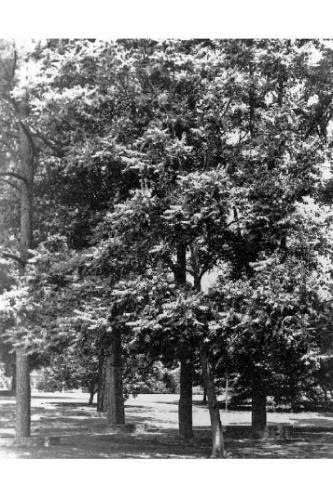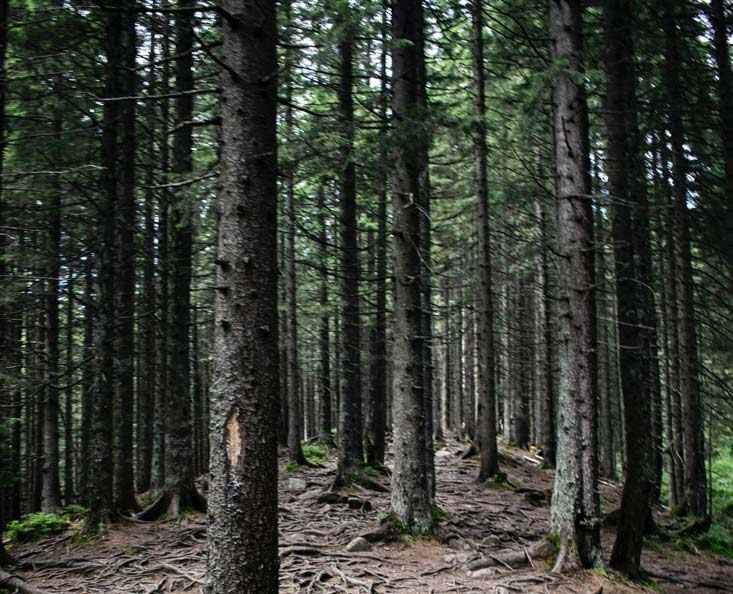It is common that forests occupy one-third of our land surface and are important to sustaining our planet and livelihoods. In fact, forests and their ecosystems stabilize Earth’s climate and regulate the water cycle. It also provides habitats to thousands of life forms. So it’s important for us to know about forestry understory management
Within the forest ecosystem, there are three distinct layers: canopy layer, understory layer, and forest floor layer. The forest layers function together to provide us with several ecosystem services which sustain all life on earth.
As much as we might value what forests do for humanity, the more important part of the ecosystem is the forest understory layer.
What is the forest understory?

The forest understory is the layer of vegetation consisting of small trees, shrubs growing between the forest canopy and forest floor. The forest understory is typically a sheltered layer that is warm and damp. Dominated by saplings, shrubs, and vines if patches of light allow small trees to grow.
Forest understory plants provide food and shelter for small animals and birds and large predators which live in the trees.
How important is the forest understory?
For starters, the forest understory occupies the same amount of land as forests do, which is one-third of Earth’s land surface. There are numerous benefits forest understories provide that are vital to our existence and livelihoods. Let’s look at three: source of food, medicine, and ecosystem services.
Benefits of Forest Understories
Source of food – many of our popular foods, such as coffee, bananas, cocoa, and cinnamon, were originally plants of the forest understory. Today, many forest understory plants provide us with edible roots, tubers, grains, fruits, nuts, barks, resins, gums, and beverages for our use and consumption. The forest understory also provides food not just for us but also for wildlife. In addition, the forest understory vegetation yields forage species used by our livestock.
Source of medicinal plants – many species of shrubs and small trees in the forest understory have medicinal properties and are used in commercial medicinal drugs. For example, American ginseng (Panax sp.), black cohosh (Actaea racemose), bloodroot (Sanguinaria canadensis), and goldenseal (Hydrastis canadensis)
Provides ecosystem services – the forest understory helps provide stability to the forest ecosystem. It helps sustain the environment which we are dependent upon.
Some of the important ecosystem services provided by forests include:
- Regulating climate extremes and their impact; and air quality.
- Preventing soil erosion.
- Nutrient cycling and movement.
- Carbon storage.
- Rainmaking and agricultural support.
- Maintain species diversity.
- Food source.
- Sustaining culture, i.e., aesthetic value, tourism, hunting, and other leisure activities.
What is the most significant threat to the forest understory?
In the past several years, we have witnessed an increase in the number of forest fires, particularly in the western United States. The fires have been numerous and intense resulting in the loss of property and lives. You may be wondering why this is happening, and perhaps think that the major threat to forests is fire.
No, fires are not the major threat to forests. According to the USDA Forest Service, the major threat to forests in the United States is understory forest vegetation that has been invaded and dominated by invasive nonnative plant species.
Okay, what are invasive nonnative plant species?
Invasive nonnative plant species are a unique class of plants that can enter a habitat, quickly become established, and change the nature of the habitat. It’s like the invasive plant species sneak in like an uninvited guest and then act like they belong in their new habitat.
As they are becoming established in the forest understory, invasive plant species will do everything they can to get rid of native plant species. If nothing is done to get rid of them, the invasive plant species can become the dominant plant species within the habitat. From there, it has the ability to spread into new areas.
In western United States, the USDA Forest Service has identified several invasive species that are linked to the increase in forest fires. Two of these invasive species are tree-of-heaven (Ailanthus altissima) and cheatgrass (Bromus tectorum).
Tree-of-heaven and Cheatgrass
- Tree-of-heaven, a small hardwood plant species, was originally introduced as an ornamental tree and is now listed as a noxious invasive tree species. It spreads aggressively by seed and vegetatively by root sprouts. Tree-of-heaven produces and exudes allelopathic chemicals that can limit or prevent the establishment of other plant species.
- Cheatgrass, a herbaceous plant species was accidentally introduced to the United States in shipments of wheat from Europe. Now classified as an invasive plant species, cheatgrass can invade understory vegetation in forest habitats.
- These have experienced some disturbance that results in opening up the tree canopy, e.g. logging. Cheatgrass is an annual species which can quickly become established within a habitat and provide fuel for wildfires.


According to the USDA Forest Service, invasive species are the greatest threat to many ecosystems, including forests. Consequences of invasive species includes increases in fire frequency and intensity; reduced water resources, forest growth and timber harvest; and negative impact on native species. Ultimately, the costs of the invasive species will be passed onto the public. The impacts to our nation’s wildlands and urban forests will lead to severe ecological and financial consequences.
What needs to be done to protect the forest understory from invasive plants?
So, protecting forest understory shrubs & vegetation means stopping the spread of invasive species is a priority for forest managers. However, it often isn’t easy to identify which species is invasive and has the potential to spread. From there, it can cause serious damage to the environment, our health, and our economy. We now know how bad tree-of-heaven and cheatgrass are, but unfortunately, our knowledge came after they were established.
How can you tell which plants are invasive, or have the potential to become invasive?
Presently, there is plenty of literature about plant species that are invasive or have traits that have been scientifically identified as being invasive. This information is available to the public via extension services of state land grant universities. These universities typically will have forestry departments with researchers and extension personnel.
With the appropriate knowledge, what next?
- First, identify the type of plant species that is invading the forest understory. Is it a small hardwood plant like tree-of-heaven, or is it a herbaceous plant, like cheatgrass? Knowing the invasive plant’s life cycle and growth habits will help identify when best to apply management or control measures.
- Second, decide on a control technique. The best approach is by using selective herbicides that can control the invasive plant without causing much damage to non-targets and the environment.
- Remember: Read the product label to ensure that the herbicide you select is safe to use where you need to apply it.
- Remember: Read the product label to ensure that the herbicide you select is safe to use where you need to apply it.
- Third, select an appropriate adjuvant and method of application. When applying herbicides, adding an adjuvant to your spray mixture can enhance the activity of the herbicide and/or modify its physical properties. For example:
- To control young tree-of-heaven plants, you can apply herbicide as low volume basal applications using a handheld sprayer, or a backpack sprayer. The spray is delivered to the lower 6 to 12 inches of the bark, being sure to treat all sides of the plant. Using Brewer International’s JLB Oil Plus nonionic surfactant, can yield excellent control of invasive tree-of-heaven plants.
- To control cheatgrass plants, you can apply herbicide with an adjuvant. This will help improve the ability of the herbicide to penetrate the leaf surface and improve control. Using Brewer International’s Cide Kick II nonionic surfactant will help you get good coverage of cheatgrass that will lead to excellent control.
- For more information about adjuvants visit https://brewerint.com/.
- Fourth, evaluate the effectiveness of your control measures two to four few weeks following application and repeat applications if needed, and if possible.
Conclusion
Mitigating the impact of invasive plant species is an important undertaking that we must all embrace. Preserving millions of acres through forestry understory management helps sustain our source of food, medicinal plants, and the ecosystem services that sustain our livelihoods.
Brewer International has been a leader in land and water chemistry since the 1980’s and for over 40 years has proudly served it’s national and regional distributors.
Our products are used widely across the United States in agriculture, aquatics, forestry, rights of way, and land management.
Our customers trust our dedication to quality ingredients, tried and true formulas, and positive outcomes.


